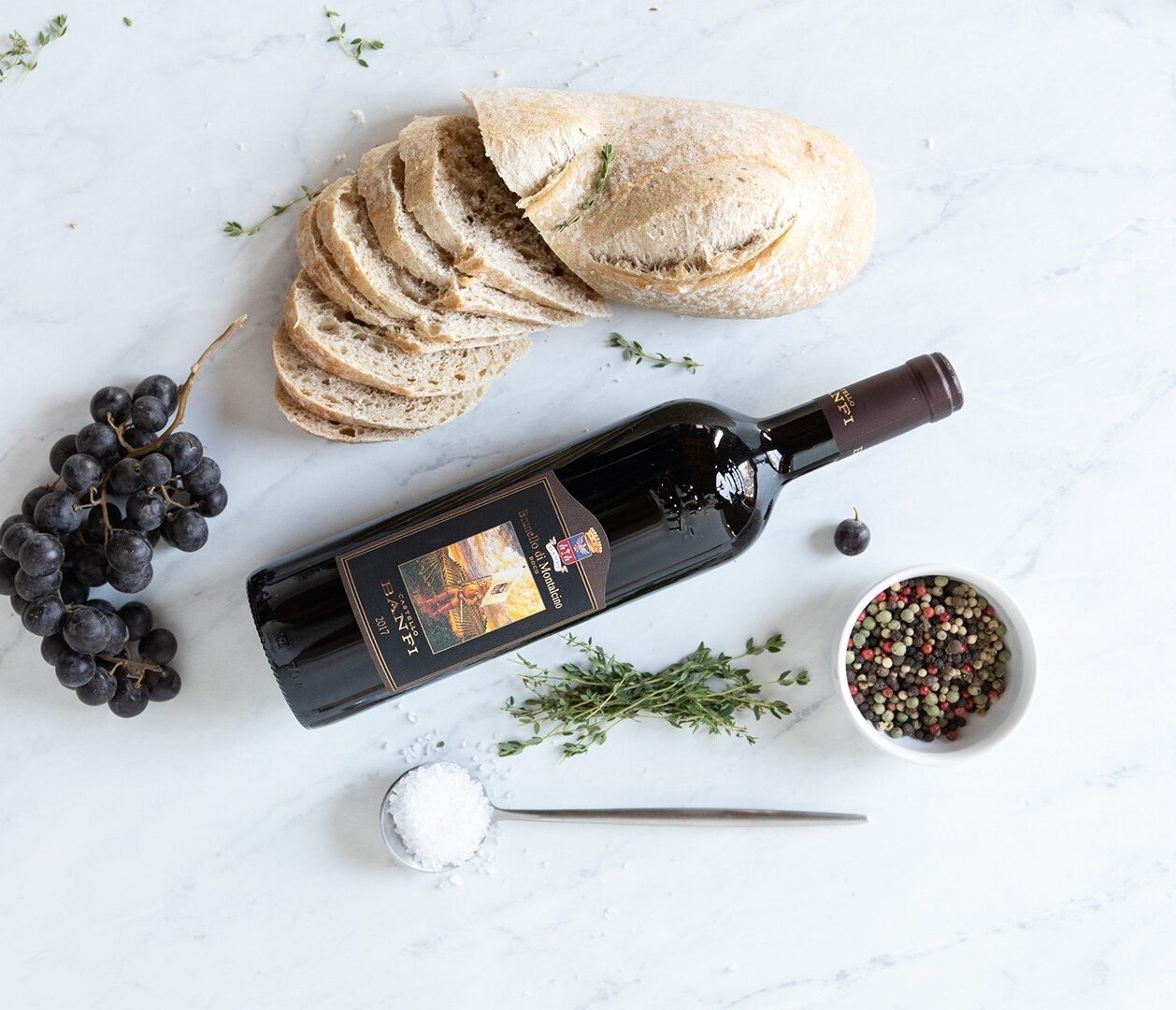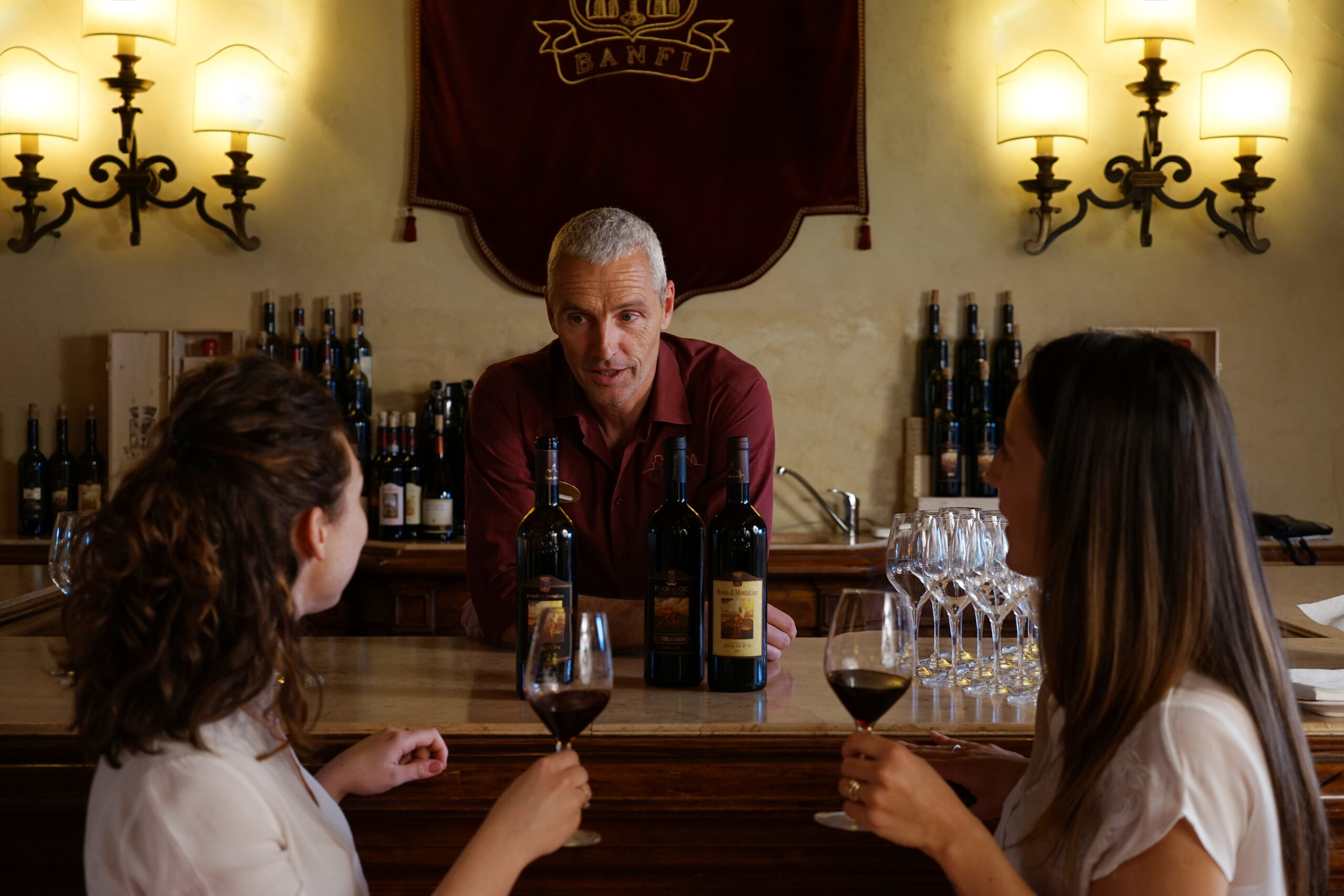Brunello di Montalcino is one of the wines Italian reds most appreciated by connoisseurs all over the world. A wine of great depth and depth, with intense aromas and full, elegant flavour, it brings to mind the territory from which it comes.
For Brunello di Montalcino we prefer thepairing with dishes succulent with a strong and intense flavour, structured and rich in sauces.
Brunello di Montalcino: the wine's characteristics
On colour is deep ruby red with garnet-coloured highlights, making it unmistakable even at first glance. The perfume is very sweet, with hints of fresh fruit that combine elegantly with notes of tobacco and liquorice. La structure is powerful, with an excellent balance between tannic charge and aciditywhich pleasantly tantalises the palate.
To achieve these characteristics, the best Sangiovese grapesmatured according to the timing dictated by nature on the hills of the Banfi estate, fermented at a controlled temperature in combined steel and Horizon French oak barrels for at least 2 years.
How to pair Brunello di Montalcino
Once the fine characteristics of this wine are known, the question arises "how to pair Brunello di Montalcino?"
This is not an easy wine to match because of its strong taste and important structure. As anticipated, the rules for pairing Brunello di Montalcino are basically two:
- do not choose dishes that are too delicate;
- prefer moist disheswith vigorous character sauces.
In fact, the strong presence of tannins might be a bit harsh to sensitive palates, thus creating an unpleasant feeling of dryness: sauces, gravies and creams help to diminish this sensation, creating a very pleasant and refined contrast of flavours.
Dishes with character, therefore, for a wine with just as much character.
Starters
Starting with hors d'oeuvres, the most suitable combination is with the mature cheeses and perfect those of the Val D'Orcia such as the Pecorino di Pienza matured in Barriquethe right combination to savour the taste of genuine Tuscany.
The first
All mushroom and truffle recipes go perfectly with Brunello di Montalcino, although the most recommended pairing is certainly with the pappardelle with wild boar ragout or with the picianother type of handmade pasta typical of Tuscany.
Meats
When it comes to meat, on the other hand, this wine is just as demanding: preference is given to the red meat, both wild and furry, prepared with sauces with a strong character and strong aromas.
One of the dishes of Tuscan cuisine to pair with Brunello di Montalcino is, for example, the peposoa very tender stew that cooks slowly for almost three hours in a copper pan, with a thick, enveloping sauce. Alternatively, this wine also pairs sublimely with the meat roasts.
Among the game recipes that go well with Brunello di Montalcino is undoubtedly the the duckseared and served on a reduction of onions and balsamic vinegar.
Sweets
How to pair Brunello di Montalcino with dessert? This signature red is not really a dessert wine, but its strong taste can be enhanced if accompanied by biscuits and dark chocolates with liquor filling.
Tips on how to serve Brunello di Montalcino
Finally, another important rule concerns the serving temperature and the goblet to be used for serving Brunello di Montalcino.
Since it is a very full-bodied wine, it is advisable to open it some time in advance, as well as to decant it into a crystal carafe before serving it at the table, if it is a vintage wine: the oxygen in the air will reawaken the qualities and aromas dormant during the long rest in the bottle.
The ideal temperature is 16-18°Cwhile the glass recommended must have a wide, pot-bellied shapeto accommodate all the fragrances that make up its inimitable perfume.


